|
Do your students know much about money and how to count it, earn it, or use it for spending? Can they make change? Do they realize that they have to have money in the bank in order to use a bank card? All of these actions are necessary if they are to be able to handle money responsibly in life. I recently worked with some students in grades 4 and 5 who had great difficulty with identifying coins, counting money, and making change. It was important to start at the beginning and work through different skills one at a time to help them understand how money worked. A few years ago, there was a Young Entrepreneurs event at our school. The grade 6 classes created items for sale and they learned all about creating a budget, purchasing materials, determining prices to earn a profit, and how to work with money. When I saw this in action, I decided to try a modified event with my grade 3 class. We created items for sale and we did a Spring Fundraiser for a special field trip. This took a lot of preparation, but it was a huge success. Check out more here. In order to make sure my students understood how money worked and how to handle it, we worked together and created this unit. I created the main outline and framework, and then added touches and refined it as we worked through the different lessons. I was amazed at how much they learned and how well they were able to work with money as a result. Part of the process included understanding how to handle money in a variety of situations. I created a bunch of scenarios for counting money, making change, earning money, spending money, and saving money. This led to the creation of Kid Themed Money Word Problems. I have used these task cards a few times since and every time they have helped kids to make connections that help them understand how money works. If you are looking for ways to help your students better understand how money works and how to use it effectively, check out these two resources. They work! Next time I will share some other ideas and resources for working with money. Related PostsAre you thinking about teaching a solar system unit to your students? Capture the attention and wonder of these young children with a hands on approach that allows them to actually see how different aspects work and why they are so phenomenal. Here are some activities and experiments that will help your students better understand the workings of our amazing solar system. Solar System Activities And ProjectsCreating models, doing research on the planets, making mobiles, making puzzles or games or other activities will all make the solar system more understandable for your students and they will have fun learning as well. Here are a few specific activities that can be done. Solar System ModelsEncourage students to create a three-dimensional model of the solar system using everyday materials such as clay, papier-mâché, or recycled materials. As they design and construct their models, they'll gain a deeper understanding of the relative sizes, distances, and orbits of the planets. They can paint each planet according to its distinctive colors and sizes and then arrange them in order around a central "sun" display. Get students to create space-themed mobiles featuring the planets and other celestial bodies. They can use colored paper, string, and craft materials to construct their mobiles, incorporating facts about each planet into their designs. Planets Facts ActivitiesAssign each student or group of students a planet to research and create a fact sheet. They can include information such as the planet's size, distance from the Sun, number of moons, and any interesting facts they discover. Encourage them to use both text and illustrations to present their findings. Have students research individual planets and create informative posters or digital presentations highlighting key facts, such as size, composition, atmosphere, and unique features. They can use their creativity to design eye-catching visuals and share interesting tidbits about their assigned planets. Create puzzles or matching games featuring images of the planets and their names. This activity reinforces students' recognition of the planets and helps them learn their order from the Sun. Planet OrbitsSet up a large-scale model of the solar system on the floor or outdoors using hoops, tape, or markers to represent the orbits of the planets. Have students take on the roles of different planets and walk or run along their orbits to understand the concept of planetary motion. Phases Of The MoonUse Oreo cookies to demonstrate the phases of the Moon. Have students carefully scrape away the cream filling to represent each phase, from new moon to full moon, and then arrange the cookies in the correct order. Another Moon ActivityInvite students to explore the surface of the Moon by designing and building their own lunar landscapes. Using a variety of materials such as sand, rocks, and modeling clay, they can recreate the craters, mountains, and valleys found on Earth's natural satellite. Space Themed Story Writing And IllustratingEncourage students to let their imaginations take flight by writing and illustrating their own space-themed stories or comics. They can invent characters, plot exciting adventures, and explore the wonders of the solar system in a creative and imaginative way. Solar System ExperimentsThese experiments are fairly easy to do as a class and they provide hands-on opportunities for students to explore fundamental concepts related to the solar system while fostering curiosity, critical thinking, and scientific inquiry. Relative Sizes And Distance Of The Planets From The SunThe sizes of the planets will range from a peppercorn to a large balloon and the distances will be so great that you may need to take the experiment outside to relatively see just how far away some planets are from the sun. Note: These suggestions are not totally to scale, but are just to see the differences comparatively in size and distance. This experiment will help students visualize the scale and arrangement of the solar system. Here are some size tips to help. (Note: Pluto was included just for interest as it used to be considered a planet). Sun - large beach ball Mercury - pea Venus - ping pong ball Earth - tennis ball Mars - golf ball Jupiter - soccer ball Saturn - large balloon Uranus - medium size balloon Neptune - medium size balloon (Pluto) - peppercorn Here are some approximate measurements for distance based on 50 yards between the sun and Neptune. (Note: using 50 meters will not significantly change the distances as a meter and a yard are only a few inches different in length). Mercury - 0.65 yards Venus - 1.3 yards Earth - 1.66 yards Mars - 2.52 yards Jupiter - 8.66 yards Saturn - 15.92 yards Uranus - 31.87 yards Neptune - 50 yards (Pluto) - 65.57 yards Orbital Motion ExperimentUse a spinning chair, like a computer chair, to demonstrate orbital motion. Have students sit on the chair while holding a ball (representing a planet) and spin slowly. As they rotate, explain how the combination of forward motion and gravity keeps planets in orbit around the Sun. Gravity ExperimentExplore the concept of gravity by dropping objects of different sizes and weights from the same height. Discuss how gravity affects the motion of objects in space and why planets orbit the Sun in elliptical paths rather than flying off into space. Here is an experiment that shows how gravity works. Moon Related ExperimentsUse a flashlight and a ball (representing the Moon) to demonstrate the different phases of the Moon. Have students observe how the position of the light source (Sun) relative to the ball creates shadows, mimicking the waxing and waning phases of the Moon. Create impact craters similar to those found on the Moon's surface. Fill a shallow tray with flour or sand, then drop small objects (marbles, rocks, or balls of varying sizes) onto the surface from different heights. Observe and discuss the shapes and sizes of the craters formed. Use a flashlight and objects of different shapes to explore how shadows are formed. Move the objects closer to or farther from the light source and observe how the size and shape of the shadows change. Discuss how sunlight creates shadows on planets and moons. Exploring Planet Atmospheres ExperimentCreate mini "planets" using balloons filled with different gases (helium, carbon dioxide, air). Observe how the balloons behave in various conditions (e.g., heated or cooled) to understand the role of atmospheres in planetary dynamics. Student ProjectsStudent projects are a great way to involve the family as well as classmates when learning about the solar system. Check out this blog post for some ways that my students have created projects in the past. By combining teaching about the solar system with a variety of student-led projects, we'll not only deepen our students' understanding of the universe but also encourage creativity, critical thinking, and collaboration. Embarking on this cosmic journey with your students can inspire the next generation of astronomers, engineers, and explorers! Related PostsPicture the excitement on your students' faces when they learn that they are going to study the solar system. Watch the awe in their eyes as they learn about the colossal power of the Sun, the magnitude of the galaxy, the rocky planets and the gas giants, and all the other cosmic bodies in the solar system. Teaching about the solar system provides students with the opportunity to satisfy some of their curiosity and learn more about the awesome galaxy they are a part of. As they journey through the solar system, they'll use their imaginations, ask lots of questions, and maybe even build models. They'll learn about the planets' names, sizes, and distances from the Sun. They'll explore why some planets are hot and others are cold, and they'll discover what makes Earth so special and unique. Depending on the age of the children, the study will be different in scope and depth. For young kids, it's important to introduce the solar system in a way that is engaging, understandable, and sparks their curiosity about space. Here are some suggestions for teaching primary children about the solar system. These are broad topics and can be approached in many different ways. Using hands on activities and visuals will help make things more understandable and engaging. What is the solar system?Basic information: The Solar System is a vast galaxy made up of the Sun, eight planets, numerous moons, asteroids, comets, and other celestial objects. Each of these entities possesses unique characteristics and features that offer valuable insights into the workings of the universe. Teaching tip: Introduce the solar system with engaging lessons that include interactive activities and multimedia resources to spark curiosity and lay the groundwork for deeper exploration. The sunBasic information: The sun is a giant ball of fire, keeping us warm and giving us light. It's a star too, but it's a lot closer to us than all the other stars we see twinkling in the night sky. Teaching tip: Teach children that the Sun is a star, and it's the center of our solar system. Explain that the Sun provides light and heat to all the planets. It provides energy, has solar flares and sunspots and helps sustain life on Earth. All the planets revolve around the sun. Use visuals that show the sunspots and flares, and how the orbits of the planets are ordered. The planetsBasic information: There are eight planets in our solar system. Each one is unique and special. There are two different groups of planets: the rocky planets and the gas planets. The rocky planets are Mercury, Venus, Earth and Mars. These planets are like big balls of rock. They are the inner planets in the solar system and the closest to the sun. The gas planets are often referred to as gas giants because they are so big. They contain various gases in their atmospheres. They are Jupiter, Saturn, Uranus, and Neptune Some of them have colorful rings around them. They are also the outer planets and further away from the sun. Teaching tip: Introduce the eight planets orbiting the Sun, categorizing them into rocky (inner) and gas giants (outer) planets. Explore each planet's unique characteristics, including size, composition, atmosphere, and surface features. Teach students to recognize the planets by their names and order from the Sun. Help them understand the relative sizes of the planets and their distances from the Sun. Use simple comparisons, such as "Earth is bigger than Mars but smaller than Jupiter" and "Mercury is the closest planet to the Sun." Orbits and moonsBasic information: Orbits are paths that the planets take when revolving around the sun. The gravitational pull of the sun keeps the planets orbiting the Sun in elliptical paths rather than flying off into space. Moons are natural satellites orbiting some planets. They have diverse sizes, shapes, and orbits, Teaching tip: Explain that planets orbit, or revolve around, the Sun in paths called orbits. Teach children that the time it takes for a planet to complete one orbit is called a year. Introduce the concept of moons as natural satellites that orbit planets. Point out that some planets have many moons, like Jupiter, while others have none, like Venus. Look at models of the solar system and the orbits that the various planets take. How does day and night work?Basic information: It takes 24 hours for Earth to rotate completely. As it rotates, different areas are facing the sun. These areas have light and the other areas have darkness. We call the light "day" and the darkness "night". Teaching tip: Discuss the concept of day and night on Earth and how it's caused by the rotation, or spinning, of the Earth on its axis. Help children understand that it takes about 24 hours for the Earth to make one complete rotation. Using a flashlight and a globe can provide a good visual of how day and night happen. Why do we have seasons on Earth?Basic information: As Earth revolves around the sun, it has different seasons because of the tilt of its axis. When the tilt causes areas of Earth to be facing the sun for longer periods of time it is summer and when it causes the area to be facing away from the sun for longer periods of time, it is winter. Spring and fall happen as the different areas change position from facing to the sun to facing away from the sun and vice versa. Teaching tip: Teach children about the changing seasons on Earth and how they're caused by the tilt of Earth's axis as it orbits the Sun. Use simple visuals, such as diagrams, illustrations, or videos to demonstrate this concept. Next time I will give some specific activities to further develop the topics above. These will help engage the children with hands on activities to provide better understanding of the concepts. In the meantime, here is a resource that may help with some basic information about the planets and also provide some fun activities to try. The benefits of studying the solar system extend far beyond the confines of our classrooms. As teachers, we can cultivate essential skills such as critical thinking, problem-solving, and scientific inquiry. We can also foster a deep appreciation for the natural world and inspire future generations of scientists, engineers, and space explorers. Related PostsWelcome to the magical world of winter, where snow-covered landscapes become the perfect canvas for learning geometry in a fun and interactive way! Embrace the winter wonderland with these six delightful winter activities that blend the magic of snow with fundamental geometry concepts. Engage your young learners in hands-on, snowy adventures that make geometry come alive in the chilly outdoors. Snowy Geometric SculpturesTurn the snowy outdoors into a geometric playground with snowy geometric sculptures! Provide children with guides for shapes like cubes, spheres, cylinders, rectangular prisms, and cones. Watch as their creativity takes flight, molding these shapes into artistic snow sculptures. As they build, engage in conversations about the properties and names of the shapes, making geometry come alive in a winter wonderland. Snowy 3D Shapes Hide And SeekTurn the snowy outdoors into a treasure hunt for 3D shapes. Hide various objects like cones, cylinders, cubes, rectangular prisms, and spheres in the snow. Children can search for these shapes and then discuss their attributes. They can also match them to corresponding shapes on a worksheet. This activity combines the excitement of a scavenger hunt with shape recognition and introduces the concept of 3-dimensional shapes in a playful way. Snowy Geometric PatternsMake some stencils of different pattern block shapes. Provide children with colored water in spray bottles and patterns. Have them make various patterns in the snow by spraying the colored water onto the snow through the stencils.This hands-on activity combines patterning with geometry exploration. Symmetry SnowmenInstead of just making snowmen, ask the children to create symmetrical snowmen, ensuring that each side mirrors the other. Discuss symmetry and encourage creativity as they adorn their snowmen with natural materials. This activity introduces symmetry in a fun and imaginative way. Snowman MeasurementBuild snowmen with different-sized body parts, such as small, medium, and large snowballs for the head, body, and base. Discuss size comparisons and measurement as children arrange the snowballs. You can also incorporate simple measuring tools like rulers or non-standard items (e.g., twigs) to measure the height of their snow creations. Winter Puzzles Using Pattern BlocksSometimes the weather doesn't cooperate and it's necessary to take winter activities indoor. Here's a great activity to try. Create some winter puzzles that can be constructed using pattern blocks. Trace a pattern block design on a transparent page or sheet protector and place it over a completed winter puzzle. Take a picture and print it on cardstock. Then cut it out and put it into a baggie to save it. Print another picture and place it in the baggie. Use the shapes and the picture to rebuild the puzzle. By integrating geometry and measurement into winter activities, children can develop a deeper understanding of these mathematical concepts in a fun and engaging way. These activities promote hands-on learning, problem-solving, and critical thinking skills for young learners. *Let the snowy outdoors be your classroom as you embark on these geometry adventures. Bundle up, head outside, and let the snowy math extravaganza begin! Related PostsWinter provides a magical and snowy backdrop for engaging and educational activities in the classroom. As primary teachers, incorporating measurement into winter-themed lessons can make learning more fun and engaging for young students. Check out 7 creative measurement activities that will not only capture the imagination of your students but also blend math and science ideas. Snowman Size ChallengeKids love building snowmen, so why not bring the fun into the classroom. Have your students build the snowmen just outside the classroom so they can see them throughout the day. If you add in some math and science, it will make the activity even more fun. Task: Get your students to measure the circumference of the different parts of their snowmen and then compare the results with their classmates. Math focus: measuring the size of different parts of a snowman helps with understanding shapes and sizes. Science focus: Observing the structure of the snowman introduces basic geometric principles. Fun thought: The snowman's middle could be as wide as a bear hug! Snow Depth InvestigationsWhen the snow falls, it doesn't fall evenly. it can be varying depths due to wind, landscape and nearby structures or trees. Task: Take advantage of this winter landscape by measuring the depth of snow in various locations. Students can use rulers to measure snow depth on the driveway, grass, under trees, and in snowdrifts. This activity not only teaches measurement skills but also encourages observation and data collection. Math focus: Using rulers to check how deep the snow is in different places, helps teach about numbers and spatial concepts. Science focus: Comparing snow depth in different locations encourages the understanding of weather patterns and how snow accumulates. Fun fact: The snow on the grass is like a fluffy pillow, while the snowdrifts resemble magical mountains. Winter Temperature StudyBraving the cold to measure temperatures on snow days is exciting for kids. As the wind howls and the snowflakes dance, students can collect temperatures and then use the data to make comparisons. Task: Explore the winter weather and record temperatures on snow days and compare them with non-snow days. Include the windchill factor. Math focus: Recording and comparing temperatures involves analyzing and interpreting data. Science focus: Understand the impact of windchill and how it makes the temperature feel colder. Winter Themed BakingCombine the joy of winter with the excitement of baking by creating winter-themed treats. Task: Practice following recipes and using precise measurements to make some delicious snacks. Math focus: Precise measurements in baking emphasize the importance of accurate calculations. Science focus: The baking process shows the transformation of ingredients, introducing basic chemistry concepts. Weight Of Different Snow TypesKids are excited to learn that different types of snow have different weights and why this is so. Task: Compare the weight of flaky, packed, and wet snow. Math focus: Weighing different types of snow involves understanding units of measurement and comparing weights. Science focus: Exploring the weight of snow types connects to the physical properties of water in different states. Fun fact: Packed snow feels like a heavy snowball, while flaky snow is as light as a snowflake gently falling from the sky and weighs very little. Snow Angel Wing Span MeasurementTake your students outdoors for some winter fun by making snow angels. After creating their snowy masterpieces, have them measure the wing spans of their snow angels. This activity combines creativity with measurement, making it a memorable and enjoyable experience for students. Task: Make snow angels and measure the wing spans. Math focus: Measuring wing spans involves comparing lengths and learning about spatial relationships Science focus: Creating snow angels introduces the physics of body imprints and the impact of pressure on snow. Melting Snow Volume ExperimentThe grand finale of our winter measurement activities is a melting snow experiment. Task: Explore the concept of volume by measuring the amount of snow in a bucket before and after it melts. Math focus: Measuring volume requires understanding of units and how they relate to three-dimensional space. Science focus: This experiment allows students to witness the transformation of a solid (snow) into a liquid (water) while practicing measurement and observation skills. Winter provides a unique opportunity to make measurement activities in the classroom exciting and relevant for primary students. By delving into these winter measurement activities, students not only strengthen their math skills but also develop a deeper appreciation for the science that surrounds them in the winter wonderland. The joy of discovery is not just in the snowflakes but in the math and science concepts that come to life during these hands-on adventures. Winter measurement activities aren't just about numbers and rulers; they're about creating lasting memories and instilling a love for learning. As primary teachers, let's embrace the enchantment of the season and turn our classrooms into snowy laboratories where every measurement tells a tale of winter wonder. The joy in their eyes and the laughter in the air will be the true measures of success in your winter measurement adventures. Related PostsAre you finding it more challenging to teach your kids language skills these last couple of years? Have you noticed larger ranges of abilities in your classrooms? How are you coping with this? I recently had a conversation with a teacher friend who has just retired from teaching Kindergarten and Reading Recovery. She still does some subbing and she has a Grade 2 class once a week this term, but she is no longer teaching full-time. We were discussing how different it is to teach in today's classroom with the amount of differentiation needed and with the number of kids who have trouble self-regulating. Different approaches are needed in order to reach as many kids as possible. Can we reach all of them successfully? Our hope is yes, but it may be difficult. It will require using every tool in our toolkit to do so. Unfortunately, not all teachers have a lot of tools to work with, especially those who are just starting out. This is a time when collaboration and colleague support is very important. With time and experience, more tools are added to the toolkit and there are more options to try out. Experienced teachers can share ideas and techniques that have worked well for them, and newer teachers can share new program ideas with the experienced teachers. Piloting new ideas and programs will give everyone a chance to see how they work and then add new tools to their toolbox. Sometimes fresh ideas can enhance what already works. It requires an open mind and lifelong learning to find out what tools will work best for you and your teaching style. Some older methods may not work well anymore and they may need updating. New is not always the best, either. With time, methods and teaching ideas have come and gone and sometimes resurfaced again. We refer to it as the pendulum swinging. If you've been teaching long enough you will have already experienced some of this. Don't be afraid to try out some ideas that have worked in the past. The saying "Don't throw out the baby with the bath water" applies here. Over the years programs and methods have come and gone. I learned long ago that there were some ideas that could be kept from these resources and repurposed in a way that works with teaching now. You may say that my style became eclectic during my teaching career. It's important to use the tools that work well for you. Don't try to fit everything in just because it's there. You will end up overwhelmed and finding that nothing works well. Teachers have different personalities and styles of teaching. You need to find what is right for you. Take some risks and try some new things, but don't try to be someone you are not. Kids need to see the real you and feel like they can connect with that person. Kids learn at different speeds and in different ways. The more ways you can share ideas and concepts with them, the more likely you are to reach them all. Don't give up on those who take longer to grasp ideas, but find ways to keep the others learning without holding them back. Easier said than done, especially now that the ranges in classrooms is even bigger. Extra support from others is gratefully received and really needed. I still volunteer at my former school, so I see this range in the classrooms and I see how exhausted teachers are getting trying to differentiate for the various levels. I know of a few other retired teacher friends who help out in classrooms or with tutoring as well. We may have retired from full time teaching, but we still enjoying working with kids. Volunteering helps us stay connected and helps other teachers to better meet the needs of their students. I currently work with kids that are in late primary who are still struggling with basic phonic skills and I also work with a group of grade 1 students that can read at a late grade 2 level already. Early on, the grade 2/3 teachers asked me to take small groups of kids to work on basic phonics activities. This also included some phonemic activities as some of them still struggle with letter/sound recognition. I also did some leveled reading with others to see if they were able to read and comprehend simple text. The grade 1 teacher was feeling like a small group of kids were being held back because of the needs of the rest of the class, so instead of giving me students that need help with phonemic skills, she asked me to take them and do more enrichment type activities with them. In the intermediate grades, several students were struggling with basic fact skills and number sense. I began working with them as well. I will share more about this another time. Another benefit of using retired teachers, is they often have some resources or ideas that they can use so the teacher doesn't have to do lots of extra prep work. Because I create my own resources, I have access to many different activities that can be used to supplement what is happening in the classroom. I also still have resources that I purchased over the years that come in handy in these small group situations. Not everyone has their own little stash of resources on hand, so teachers may need to provide materials for them. Keeping a kit of resources for situations like this may take some time, but it will be there for using over and over again in the future. Here is a sampler kit that might be helpful as a start. Winter resource for your toolboxI just put together a bundle of language activities that focus on some word work, word families, digraphs, and parts of speech. I am currently creating another bundle that will be more focused on phonics and phonemic awareness. It will be out soon. If you are interested in checking out the different resources for my winter word work bundle, click the image below and you will be able to check out the previews for the various resources. I hope you find what you need for your toolkit and that you have a successful year with your students.
Remember: You are unique and you need to be true to yourself. Let the best you shine through. The holidays are over and it is time to jump back into academics. This sometimes takes some time as the structure and routines are reestablished. Getting settled after the Christmas break may require not only activities to make kids comfortable and help them get regrounded and back into routines, but also some activities that inspire and excite them as they get back to academics. January and February are full of different celebrations that can be the focus of activities as academics are reintroduced. Here are a few ideas and resources that might be fun to try. Goal settingFor January, goal setting is a great idea. It can be a way to make a fresh start and provide a focus for upcoming months. These goals can also be used as a focal point for upcoming student led conferences in the spring. Here are some templates that might be helpful. It is important to make sure that children understand that they have accomplished many things as well. They need to focus on what they can do well and then choose things that they wish to improve. These stars and wishes could be personal, academic, or general. It is up to the kids to identify what their strengths are, but they may need some guidance at the beginning. Perhaps they could ask others what they think. We can be our worst critics and we may not see what others see, so having others share what they notice could be helpful and empowering. Here is a template to fill out and keep as a reminder. Grab a free copy now. Ringing in the New YearMany families celebrated on New Year's Eve. Some of your students may have been able to join in as well. They may have had fun activities to do and noise makers or fireworks may have been part of the celebration as well. Others may not have had this experience. Why not have a class celebration to start off the New Year. Try creating photo booth images and a bulletin board display. Many stores are clearing out New Years items so you may be able to get some hats, blowers, and maybe even glasses to add to the fun. Here are some templates that could work as frames for the photo booth pictures. They include frames without the year so they can be used for future years if you are not ready to use them this year. Groundhog DayFebruary 2nd kids wait to find out if the groundhog has predicted an early spring or another 6 weeks of winter. Here are some math and language activities as well as a couple of mazes that might be fun to try. Other Winter CelebrationsChinese New Year, Hundreds Day, and Valentine's Days are 3 other winter celebrations that kids love to celebrate. Here are some activities for those special days. No matter the celebration, hands on fun activities can help to engage kids in their learning. They can be used as a jumping off point before introducing new concepts, or they can be the theme for writing or research. It's up to your creativity and needs as you plan your lessons. Here's to having fun and learning as the New Year begins. Related PostsSolar system projects are fun to do and they allow for student choice when selecting how they wish to share their knowledge. This has always be a great way to showcase my students to their parents, other students, and the school community. It's amazing how much young children can learn and how excited they can get about a subject when it is approached in this manner. Here is the project and options that I used. It's important to emphasize that no matter what form of project is selected, there is a presentation component that is included. This helps to demonstrate what has been learned and also allows for questions to be asked about the project. Written Report Or EssayThe traditional way to share research is through a written report or essay. Although this is a great way to share information, for some students it is difficult to do, especially when they are younger and emerging writers. If kids enjoy writing and sharing knowledge this way, the option should be provided for them. Here is my grandson with his report. He chose this option and was very proud of his presentation to the class and to the parents. Model Or DioramaModels or dioramas are often popular because they are so visual. The key is to make sure that there are enough details or characteristics shown to help with identifying the planets. The descriptions and labels are also very important. PostcardsCreating planet postcards is fun to do because it allows for some humor and captions. The idea is to take some key characteristics of the planet and use them in an imaginative way to capture the attention of others. Brochures Or InvitationsBrochures or invitations are another imaginative way to represent a planet. It is also a great way to demonstrate how to promote events or objects. InterviewAlthough interviews are an option, this choice is rarely taken because there are not always experts nearby or accessible, however, if a child does have someone that they can connect with, it is a great way to learn more about the solar system from an expert. Solar System ResourcesHere are a couple of resources that make using projects work. Our Solar System Project is an outline of what is required, a letter to parents, a criteria outline with a simple marking sheet, a solar system test, and some sample photos of completed projects.
The Solar System - Fun Activities For Learning About The Solar System And It's Planets is a new resource that has ready made templates that can accompany the projects or be used by themselves. Teaching young children about space and the solar system can be an exciting and awe-inspiring experience. Here are some creative ideas to make learning about space engaging for young learners. Sweet Moon PhasesLearning about the phases of the moon can be fun if you add in a little bit of sweetness. Try using cream filled cookies to show the different phases of the moon. The amount of cream on the cookie represents the fullness of the moon. It's a tasty and visual way to understand the moon's changing appearance. Solar System MobileHow many times have you seen a child's room decorated in a space theme? Kids love to imagine they are surrounded by the planets and the stars. What better way to create excitement and fun than to have each child make their own solar system mobile. Provide them with paper plates, paint, markers, and string. They can paint or draw the planets, cut them out, and hang them in order from the Sun to create a miniature representation of the solar system. Alien SpaceshipsKids often imagine there are aliens on the different planets and they wonder if we will have visits from them someday. Creating alien spaceships is a fun way to let their imaginations live on. Here are some that my class made one year using the lids of slushy drinks and paper plates. Space StoriesAs kids learn more about the different planets and the solar system, they can create space stories using some of the information they have learned. Make sure that they include some factual information in the stories but allow them to use their imaginations to create events that happen there based on the facts. Moon Visits And Other Space AdventuresThe astronaut visits to the moon took place many years ago, so many children may not know much about them. They would probably enjoy watching video clips from the first steps on the moon and subsequent visits. They might also like to learn more about space trips to the space stations and what goes on there. Maybe they could even learn about the possibility of future space trips to other planets. Research ExpertsThere are many books available that provide information about the inner and outer planets and what we know about them. It would take a long time to go through all of them and learn enough information about each if one person had to do it themselves, but if a group of people each took one or two planets, they could become the experts and share what they learn with the others. Mixing fun imaginative activities with research will engage and entertain your students as you venture into the worlds beyond. After exploring and broadening the wonders of space, try doing a project that demonstrates what has been learned. Doing a project about the solar system with multiple ways of sharing what was learned is a great way to culminate your space unit. This was one of my favorite projects and each time my class did it, the results were incredible. Check out my next blog post for more.details. Have fun with your explorations of space! Related PostsHands-on science activities engage our children and encourage their curiosity. Here are some simple and fun science experiments that require minimal materials but address many questions that kids have pondered. Let's embark on a journey of discovery and learning! Balloon Rockets (Force Experiment)Question: How does the size of the balloon affect the distance the rocket travels? Hypothesis: The larger balloon (will/will not) make the rocket travel farther. Materials: balloons, string, straw, tape, measuring tape Procedure: 1. Tie one end of the string to a chair, door knob or something that can support it. 2. Slip the straw onto the string at the other end. 3. Tie the other end to another support so that the string is taut. 4. Inflate balloons of different sizes (pinch them closed, don't tie them), attach them to the straw with tape, release them and measure the distance each one travels. Observations: Measure distances each balloon rocket travels and record the results.. Conclusion: Analyze the data and determine if the hypothesis was correct or not. Discoveries: As the air rushes out of the balloon it creates a force motion called "thrust" that propels the balloon forward. The size of the balloon will determine the amount of thrust provided and how far the balloon will travel. Egg Drop Challenge (Gravity Experiment)Question: Can an egg be dropped from a rooftop without breaking? Hypothesis: With the right materials and design, the egg can be protected from breaking when dropped. Materials: Eggs, various materials for padding (e.g., cotton balls, bubble wrap, foam, tissue paper) tape, string, plastic bags, small boxes, other household materials for building a protective structure, ladder or access to a roof Procedure: 1. Create a protective structure to hold the egg 2. Attach the egg 3. Drop the structure from the roof Observations: Record the type of material and structure created to protect the egg. Record whether to the egg remained intact or broke. If this was done with several different structures, record each one and the results. Conclusion: Identify the materials and design strategies that were most successful in protecting the egg from breaking during the drop. Review the hypothesis and answer the question. Discoveries: By attempting to drop eggs from a height, students experience firsthand the force of gravity and the need to counteract it to protect fragile objects. The conclusion can highlight how different materials and design elements can effectively absorb and distribute the force of impact. Sink Or Float (Buoyancy Experiment)Question: Which objects float and which objects sink? Hypothesis: I think _____ will float and _____ will sink. Materials: Various objects of different materials (plastic, wood, metal, cork, etc.), large container of water Procedure: Place one object at a time in the container of water Observations: Observe and record whether the object floats or sinks. Categorize the objects as floaters or sinkers based on the observations. Conclusion: Determine which objects float or sink and compare the results with the hypothesis. Discoveries: The children will learn that shat, size and material of an object can determine whether it floats or sinks. Objects with lower density than water float (such as cork or plastic), while objects with higher density (such as metal, or stone),sink. Note: The results can change if the density of the water changes (salt water is denser than fresh water). Layered Liquids (Density Experiment)Question: How do different liquids of varying densities interact when layered? Hypothesis: Predict the order in which liquids will layer based on their densities Materials: various liquids (water, cooking oil, honey, dish soap, food coloring), tall transparent container Procedure: 1. Fill the container 1/3 full with water. 2. Pour different liquids , one by one, into the container. Add a few drops of food coloring to each layer. Observations: Record the order that the liquids are added and how they settle. Examine the layered liquids and their densities noting any patterns or differences. Conclusion: Determine the order of the liquids and compare them with the hypothesis. Discoveries: The children will observe that different liquids do not mix easily and form distinct layers. They will also see how light interacts with the layers to create a rainbow-like effect. Liquids that are heavier (denser) sink to the bottom, while liquids that are lighter (less dense) stay on top. Volcanic Eruption (Chemical Experiment) Question: What happens when you combine baking soda and vinegar? Hypothesis: I think they will react together. Materials: baking soda, vinegar, red food coloring, playdough or something that can be shaped to look like a volcano, container to place under the volcano shape, spoon Procedure: 1. Create a volcano shape using playdough or a model and place it in a container. 2. Measure and add baking soda inside the volcano structure. 3. Add some red food coloring to the baking soda. 4. Pour vinegar on top of the baking soda and observe the reaction. Observations: Record what happens when the vinegar mixes with the baking soda. Collect data of what you see. Examples: Upon pouring vinegar onto the baking soda, there was an immediate reaction. Bubbles and fizz were produced, resembling a mini volcanic eruption Conclusion: Mixing the vinegar with the baking soda created a chemical reaction that caused bubbles of gas to form. Discoveries: When an acid (vinegar) is combined with a base (baking soda) it creates a chemical reaction that produces carbon dioxide gas. The gas is released as bubbles causing a forming reaction.This gas expands and causes the foam to flow from the volcano. These simple and enjoyable experiments provide a hands-on approach to teaching fundamental scientific principles. By engaging in these activities, children not only gain a deeper understanding of concepts like force, gravity, density, and chemical reactions, but they also develop essential skills such as observation, classification, and critical thinking. We can foster a love for science early on, using hands-on activities and create a lifetime of curiosity and exploration. Check out this blog post for other experiments that might be fun to try. Here are a couple of resources that might be helpful as well. String Telephone Experiment Using The Scientific Method Scientific Method Happy experimenting! Related Posts |
About Me Charlene Sequeira
I am a wife, mother of 4, grandmother of 9, and a retired primary and music teacher. I love working with kids and continue to volunteer at school and teach ukulele. Categories
All
|
























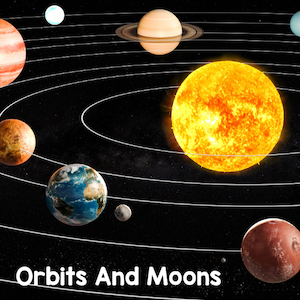









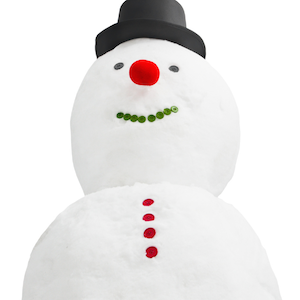






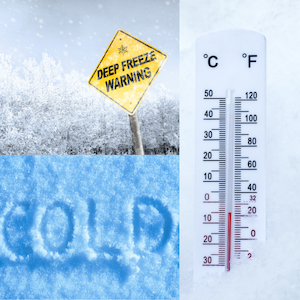


















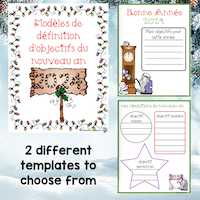


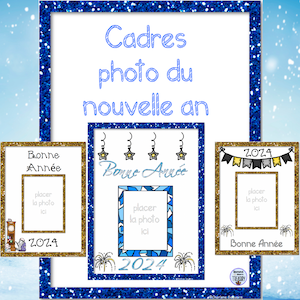




















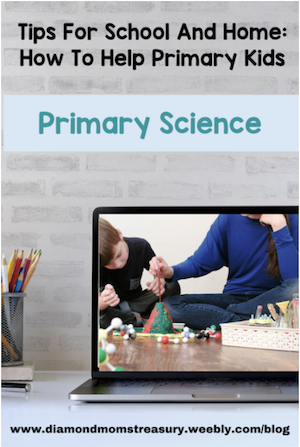







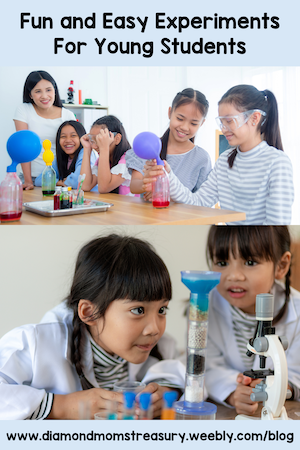





 RSS Feed
RSS Feed